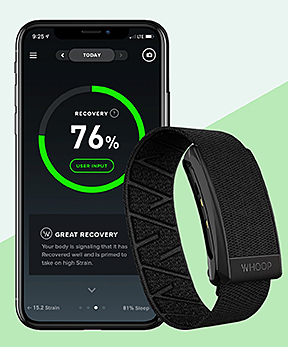Heart Rate Variability To Beat or Not to Beat
There are a lot of ways to measure your health. Your blood pressure, your heart rate, your blood sugar etc. are all metrics of health which you can track easily. There is another marker…heart rate variability which also gives you important information about your overall health. Your heart rate is easy to measure…just feel for your pulse and count the number of beats in 60 seconds and you have the heart rate. Heart rate variability is different. It requires a device like an EKG machine, or an Oura Ring or Whoop to measure it accurately.
 There are technically a number of different ways to measure HRV but it’s easiest to use a device like the Oura Ring, Whoop or any modern device that measures heart rate. These should be able to give you a heart rate variability measure.
There are technically a number of different ways to measure HRV but it’s easiest to use a device like the Oura Ring, Whoop or any modern device that measures heart rate. These should be able to give you a heart rate variability measure.
Typically, high heart rate variability is a good thing. Think of it this way…two people can have the same heart rate…lets pick 60 beats per minute…but one has a frisky heart and one has a dull plodding heart…the frisky/healthy heart beats just a little early sometimes and a little late at other times all the while maintaining the 60 beats per minute overall. The dull plodding/less healthy heart keeps a steady beat…never early…never late. You would think that being regular would be a good thing for the heart…but a healthier heart is a more variable heart.
As expected, things that improve your overall health improve your heart rate variability and you can use this measure as an independent analysis of your health on an ongoing basis. So, better sleep, more exercise, better diet, and less stress all improve heart rate variability. Heart rate varies more in some people than in others and there is day to day variation so it’s very popular to use night time readings to get a more reproducible and trackable number.
So heart rate variability reflects overall health. Although affected by diet, exercise, sleep, alcohol etc., the main determinant of the heart rate variability is the balance between your sympathetic and parasympathetic nervous systems. The sympathetic system is known as the fight or flight reaction and the parasympathetic system is known as the rest and digest reaction. The sympathetic system uses adrenaline to increase the heart rate and the parasympathetic system uses acetylcholine to decrease heart rate and the balance determines both heart rate and heart rate variability.
We are supposed to live in harmony with nature with a balance between the two symptoms but most of us are out of balance with too much sympathetic tone. You can try to restore this balance with exercise, yoga, deep breathing exercises (see Wim Hof ), sauna, meditation, and cold immersion. Interestingly enough, heavy exercise lowers heart rate variability before it ultimately raises heart rate variability.
Since the vast majority of people have too much sympathetic tone and not enough parasympathetic tone…too stressed out and not enough relaxed we focus on the most basic tools to balance the two which are breathing exercises. Slow, controlled nasal breathing is a great technique to balance the two sides and improve your heart rate variability. So you can immediately improve your health by using simple breathing exercises…what could be easier than that.
Of course this is America so creative people have come up with various devices to help us. Heartmap.com has an interesting combination of a device and smartphone app that helps you increase your parasympathetic tone via controlled breath exercises.
There is an interesting device that claims it uses vibration you can’t really feel to improve your heart rate variability. Have not tried it yet but it’s available at https://apolloneuro.com/.
Don’t you find it fascinating that we are measuring a heart derived number to tell us about our autonomic nervous system? Isn’t it great that we can affect our different systems with simple interventions? The interplay between the systems never ceases to fascinate me. HRV is just one more measure you can easily and safely use to access and improve your health. Until next month…get well and stay well.











